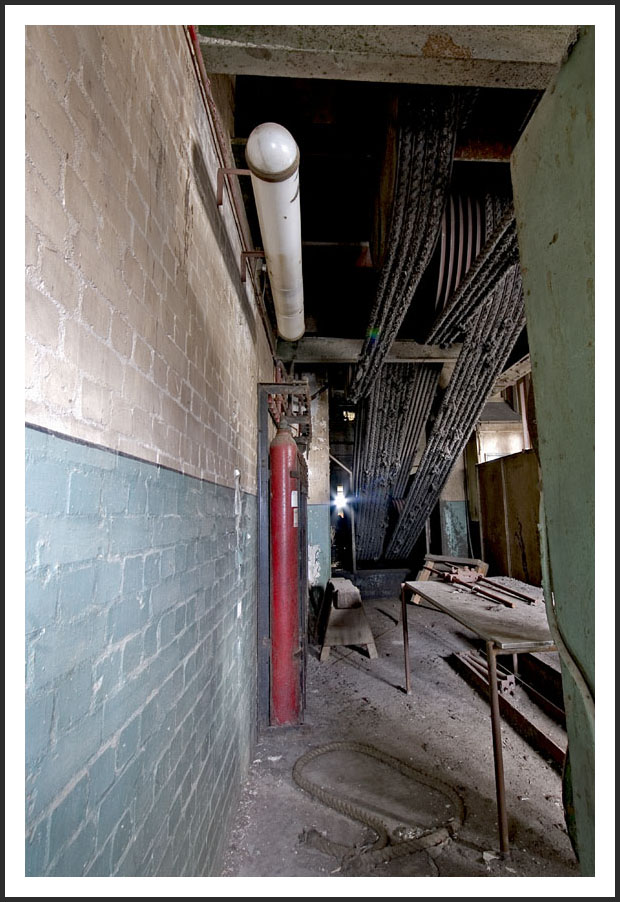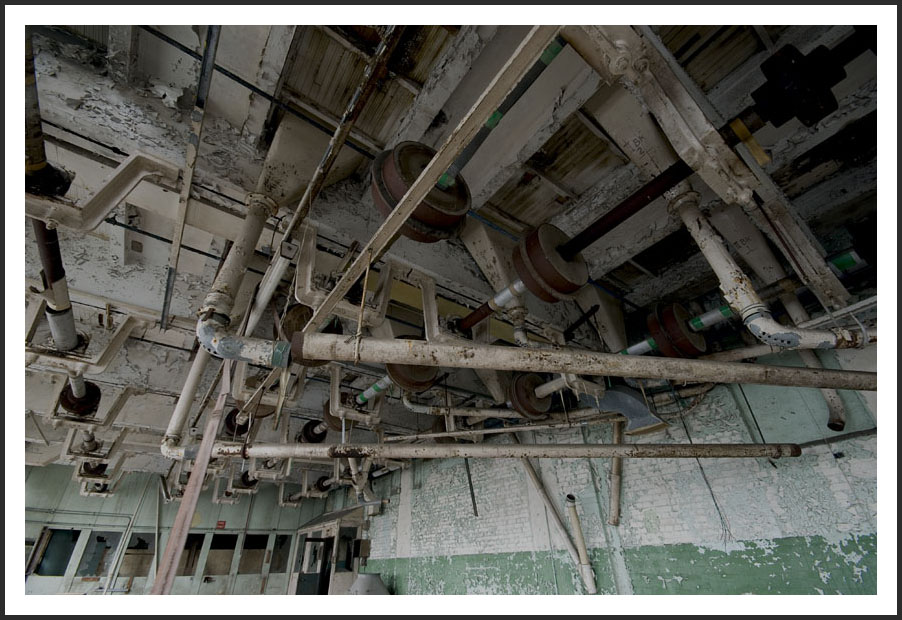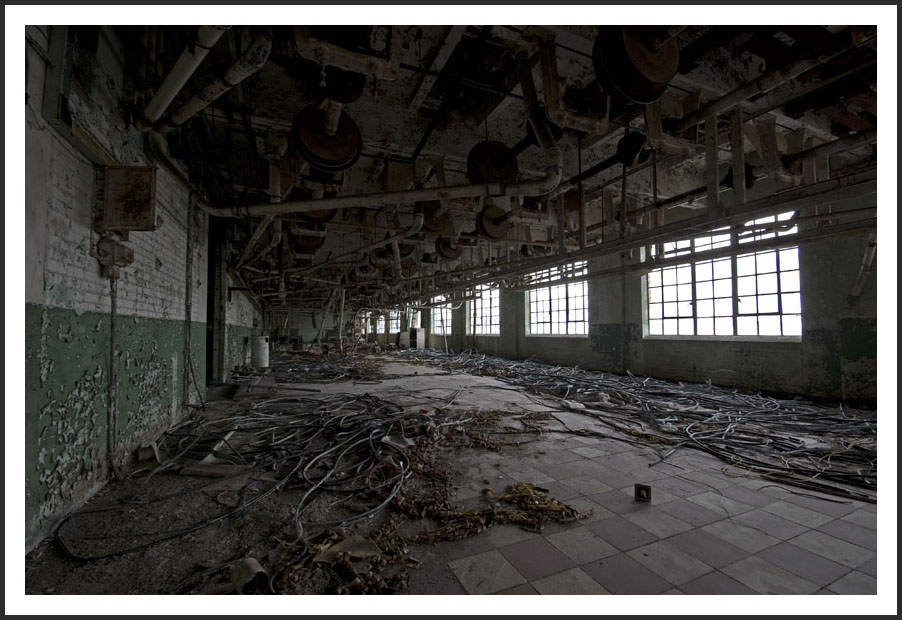

Millennium Mills, LON - May 2009
Built at the turn of the century, there are in fact two mills, the smaller one is known as the Rank Hovis Mills and the bigger the Spillers Millennium Mills. My photographs cover both the buildings. I'm not sure exactly what type of food stuffs were produced at each but I do know the Spillers mills is most often associated with it's brands of pet food. They were closed in the mid 80's along with the rest of the Victoria docks and there are plans to convert them into housing. They lie, imposing and desolate, on a huge site covered in scrubland and concrete along with very active and very mobile security. Certainly one of the most awe inspiring, dangerous and frightening buildings I have ever been it, but how truly photogenic they are.
The Mills are truly what I would class as an "epic" explore, certainly one of the last really big scale industrial locations left in London. They are also incredibly difficult to get into, featuring a very "mobile" security, a lot of running and some quite complicated climbing. Once inside we started in the smaller Rank Hovis mill.
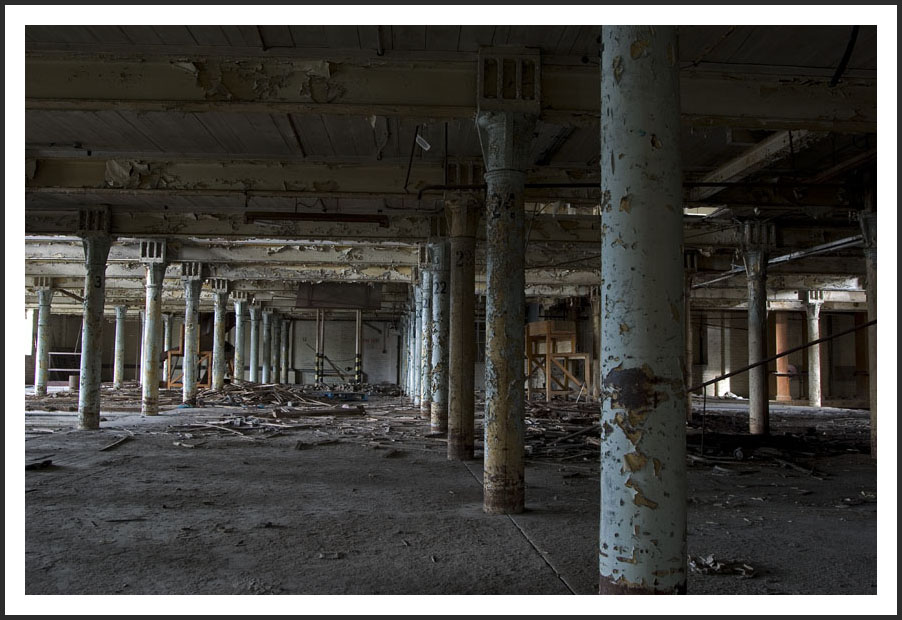
The first thing of interest are the huge screws that would have conveyed the grain through the floors of the mills.
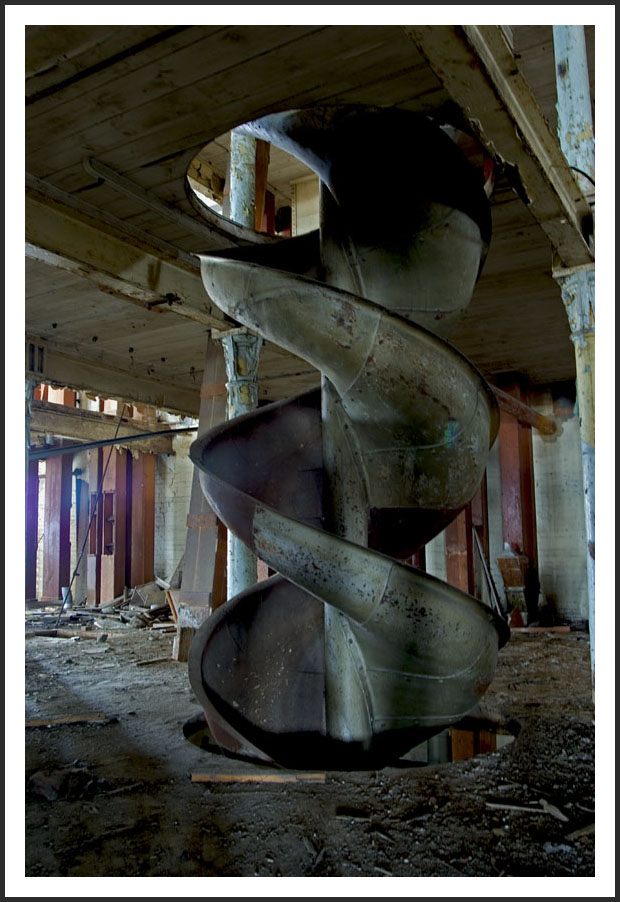
People mover.
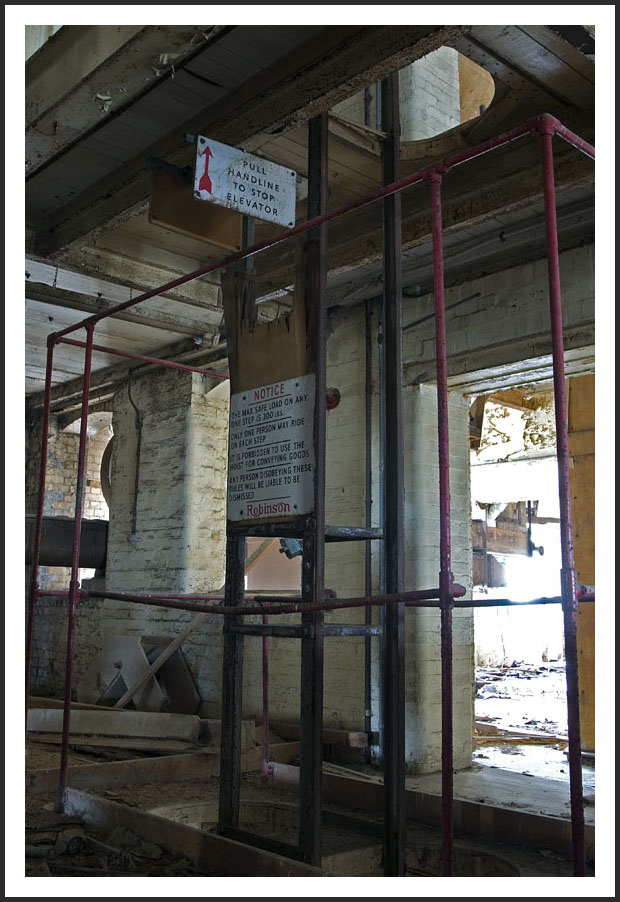
Whilst admiring the interior one needs to keep a careful lookout as to avoid a nasty fall. I'm not certain why the floors have gone but it would appear that some have been purposefully removed and others have just rotted away. There are also various sized holes in the floors, presumably were milling equipment has been removed. Some of these holes are deceitfully covered up by various detritus, for example thin sheet metal. Put your weight on that and the metal will give way and it's straight down. Express route.
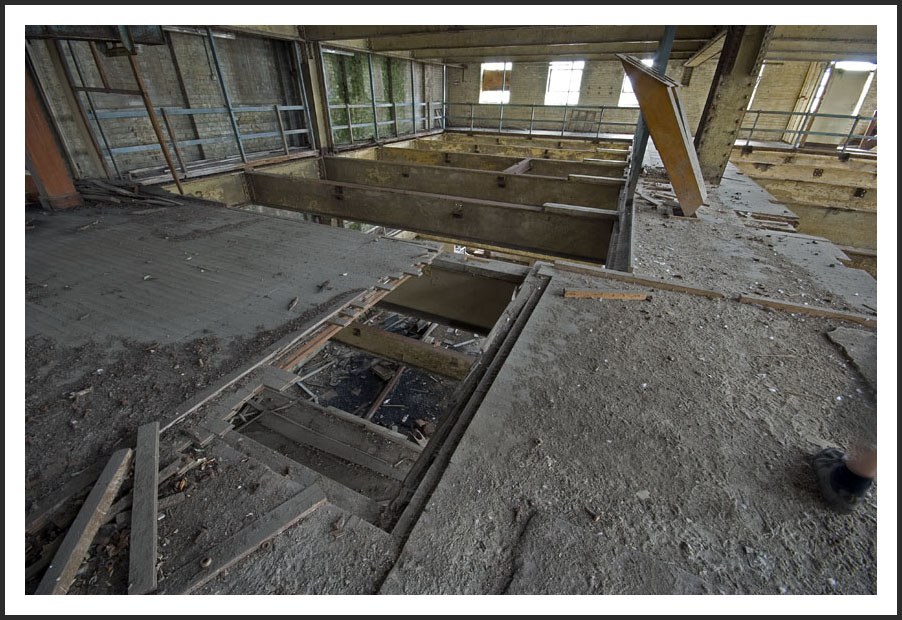
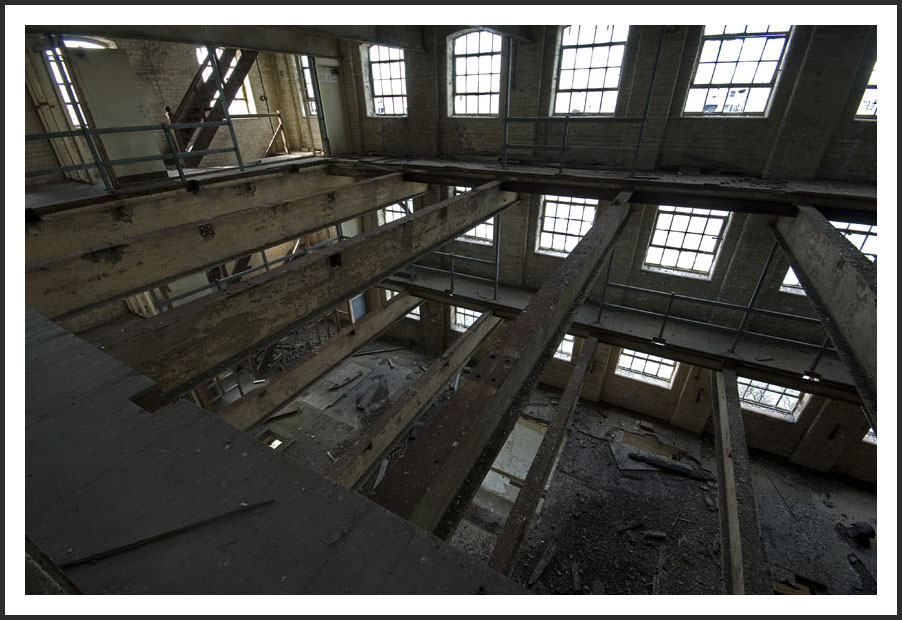
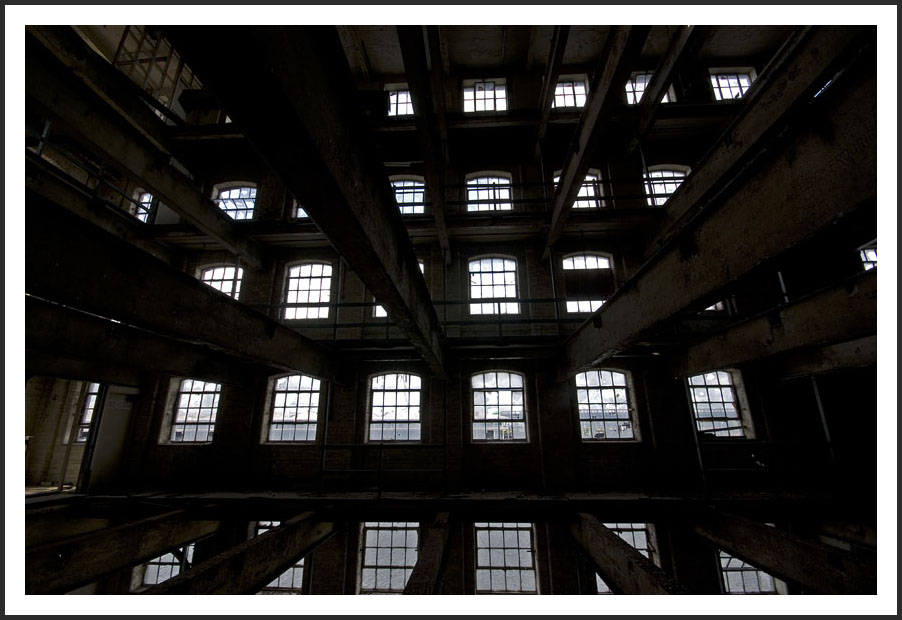
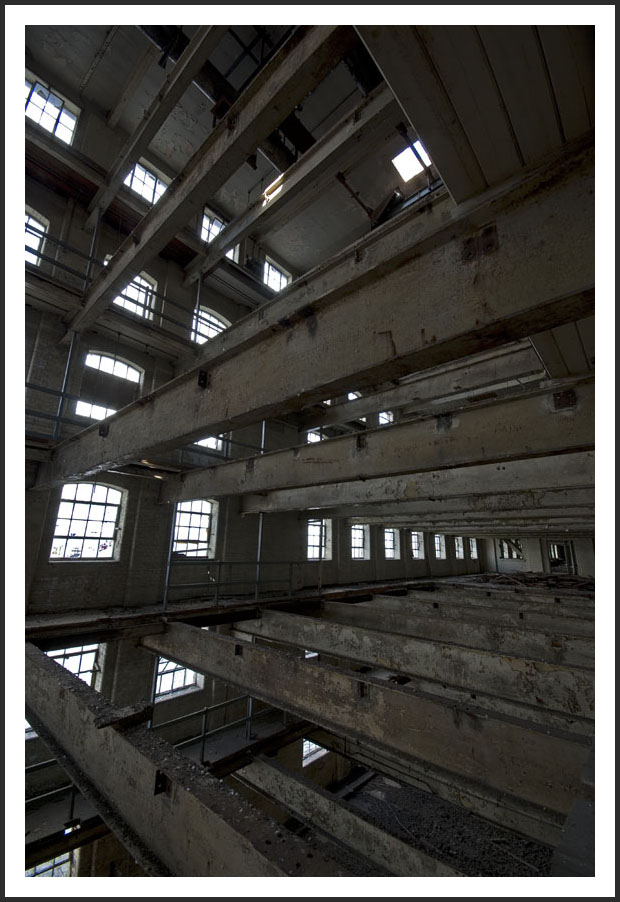
The head house in the Rank Hovis mills.
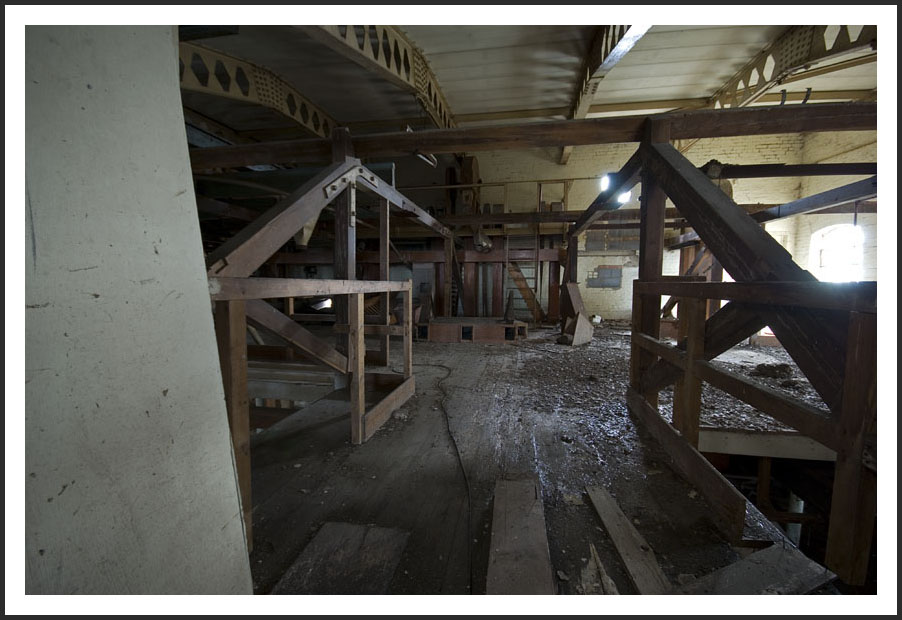
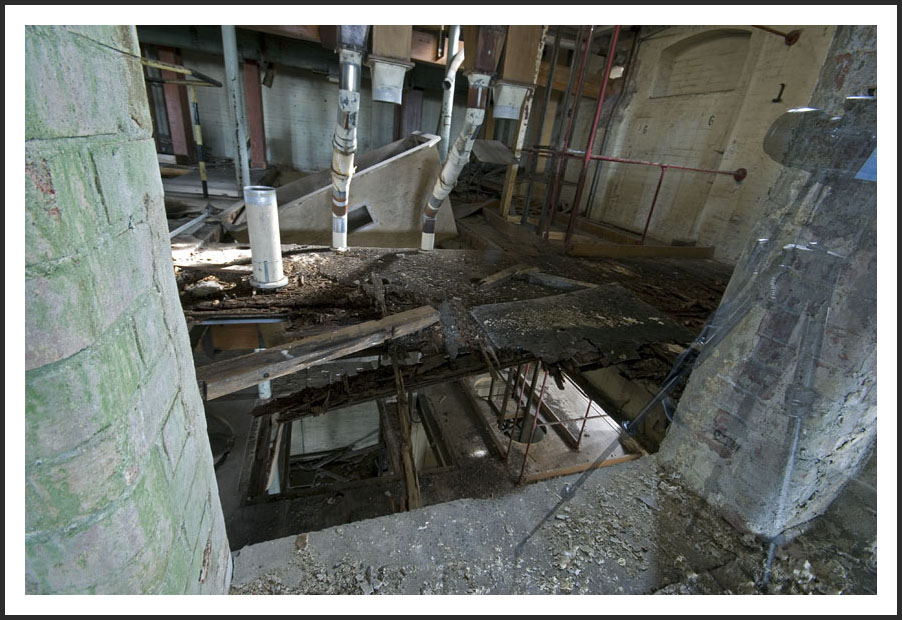
We are now in the Millennium Mills proper. The mills were built by the William Vernon & Sons in 1905 and named after one of the types of flour they produced back then. The flour had had one an award for excellence in 1899, hence Millennium flour. Up the stairs we go.
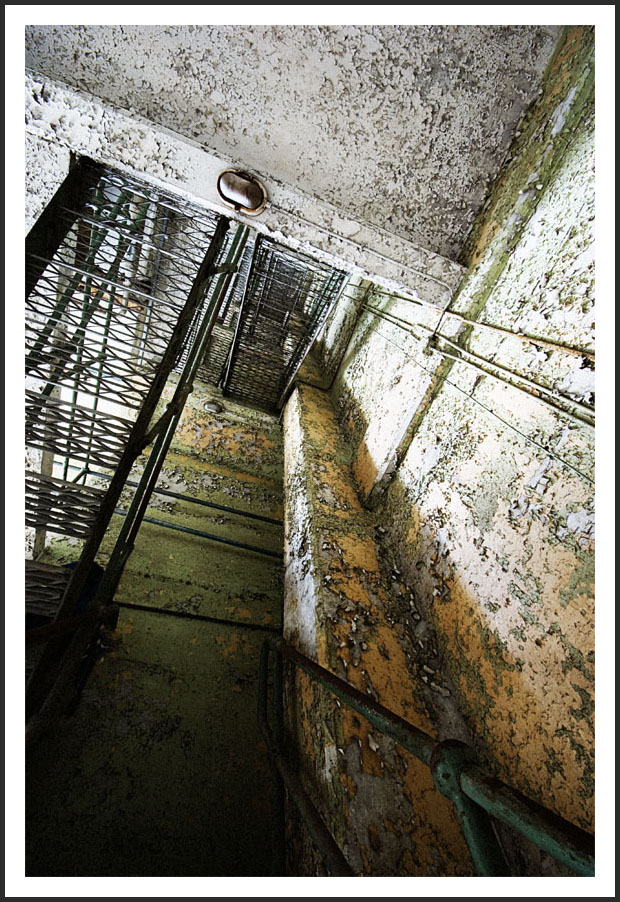
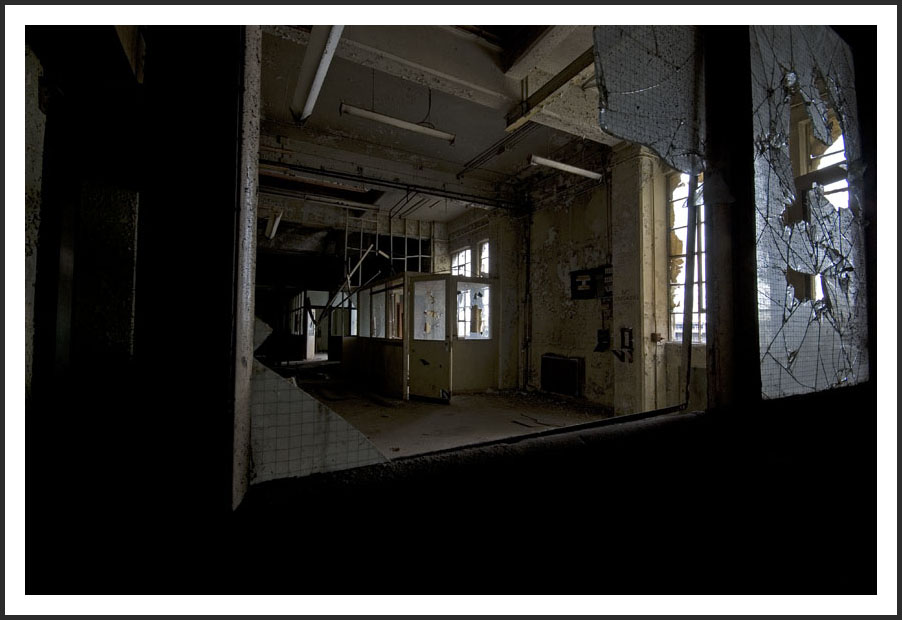
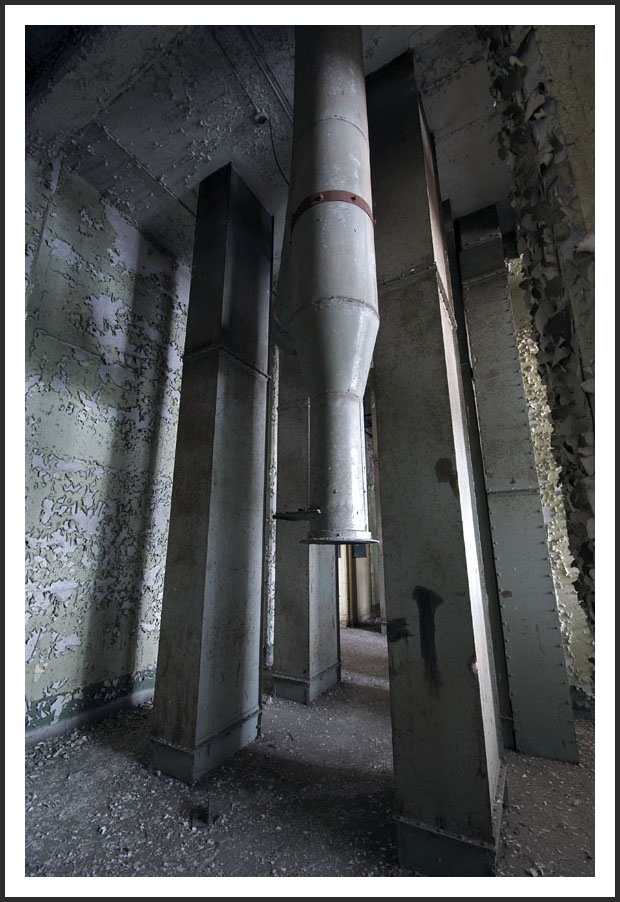
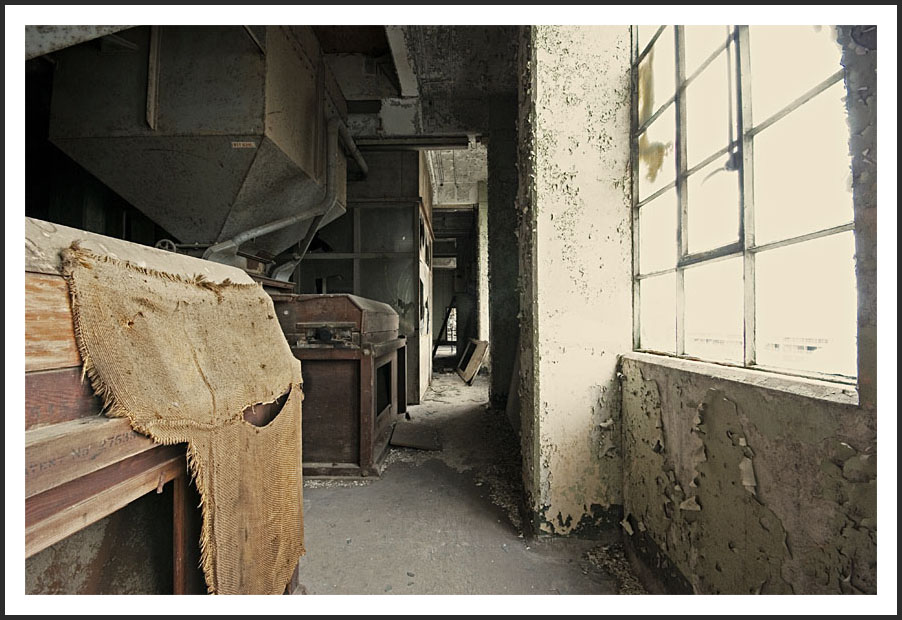
We started in the middle of the building on one of the many production floors. Many of the rooms are stripped but still quite pleasant to be in. I think there is something quite enjoyable about huge man made empty spaces.
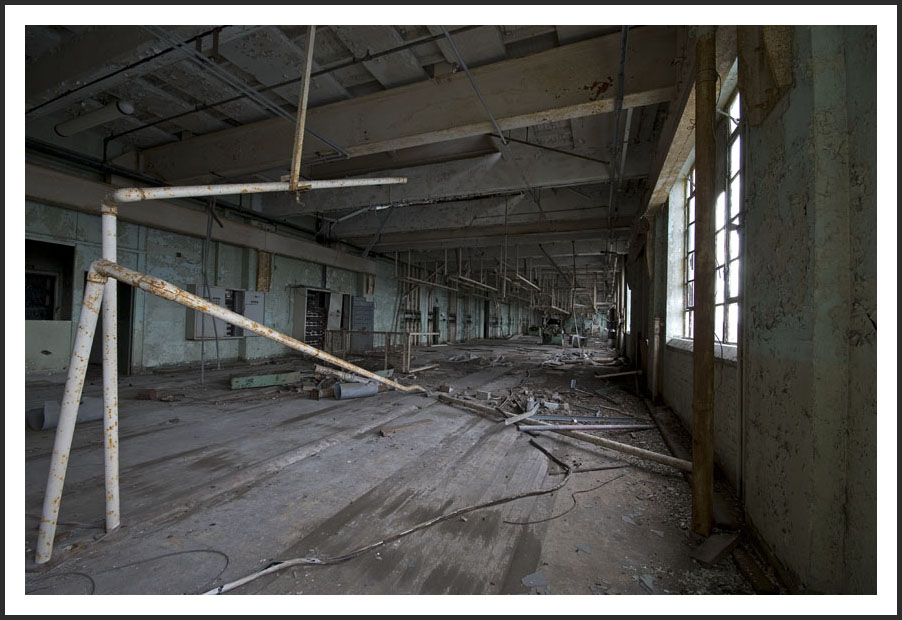
Dotted about the place are a few of these small offices with this particular one still littered with the paperwork required to run a mill.
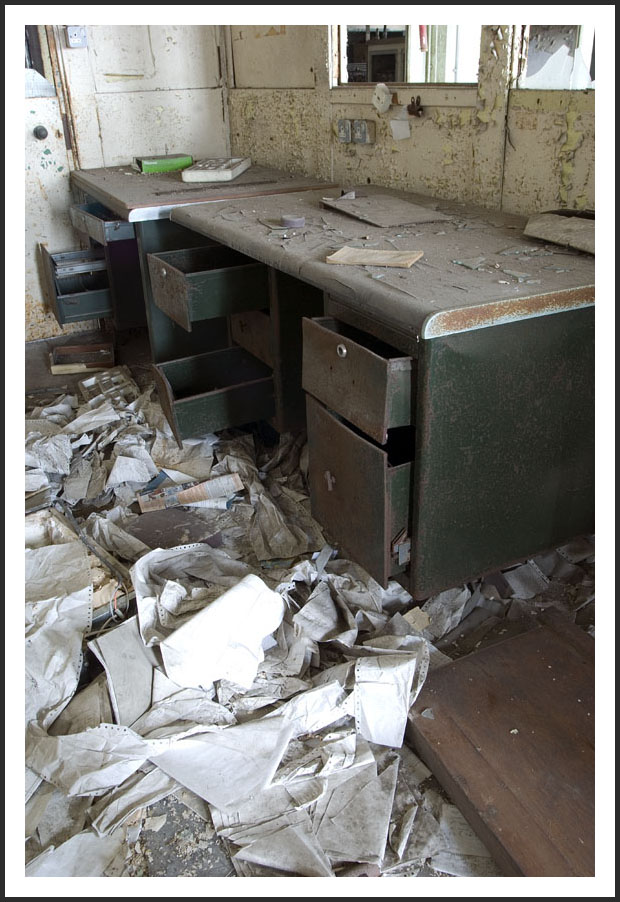
We found a booklet in here explaining how to maintain the machinery used in the room in the above picture. The machines would have produced a bleaching agent, chlorine di-oxide, presumably to make the flour white.
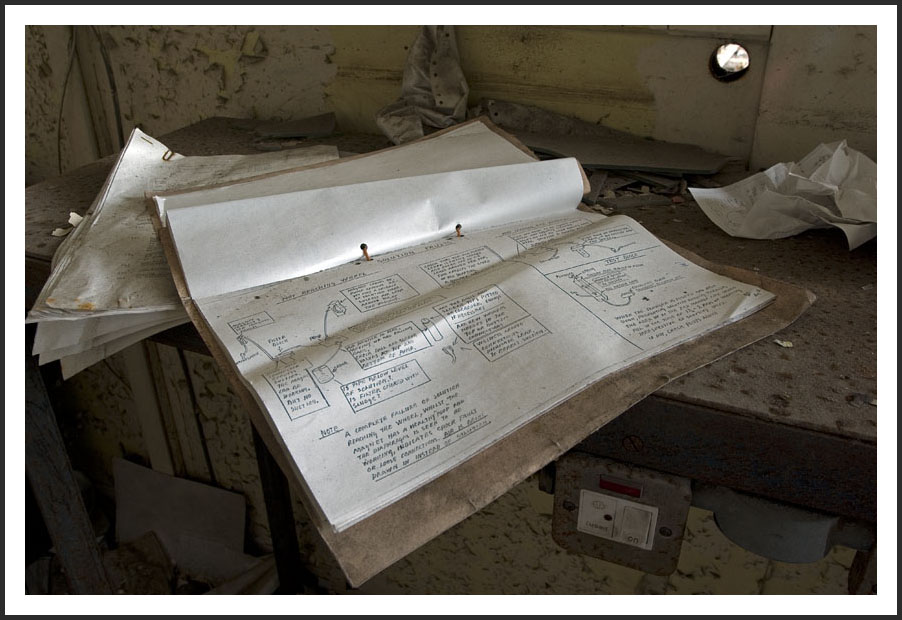
Switch gear for the lift.
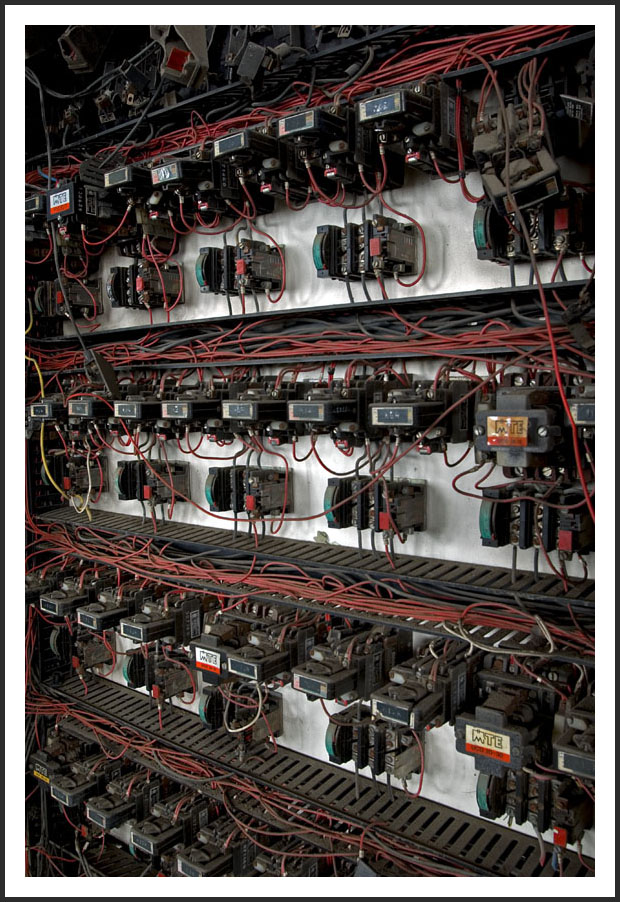
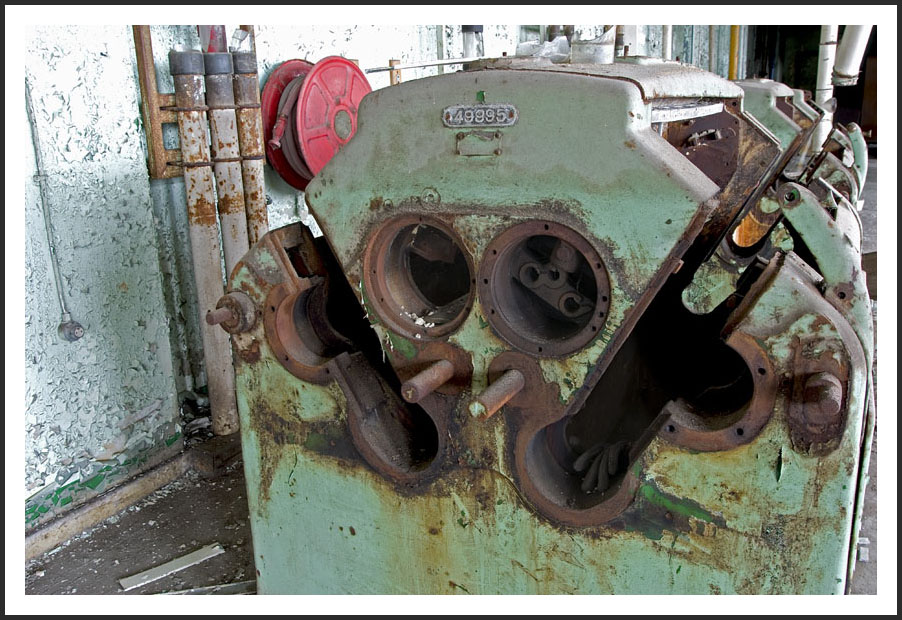
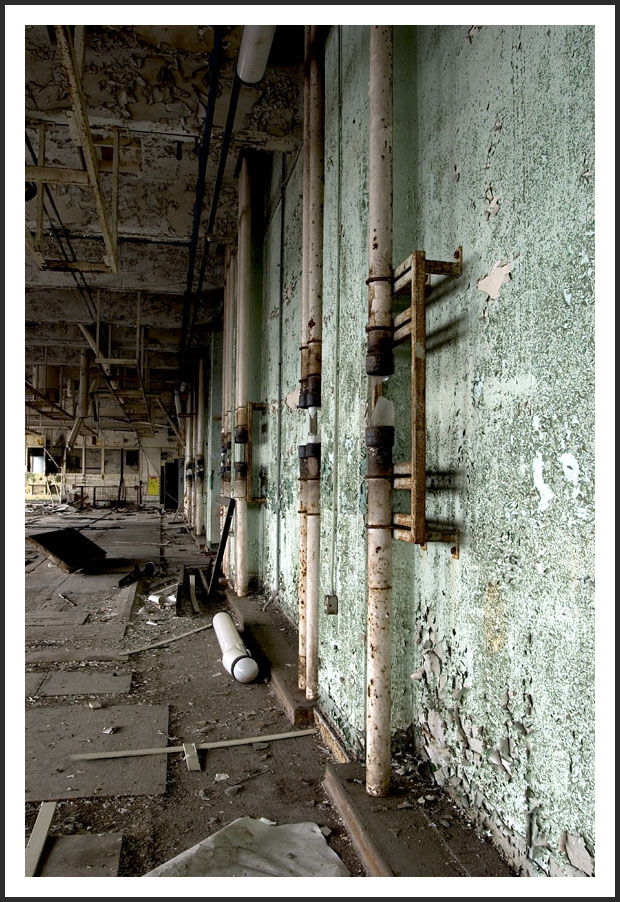
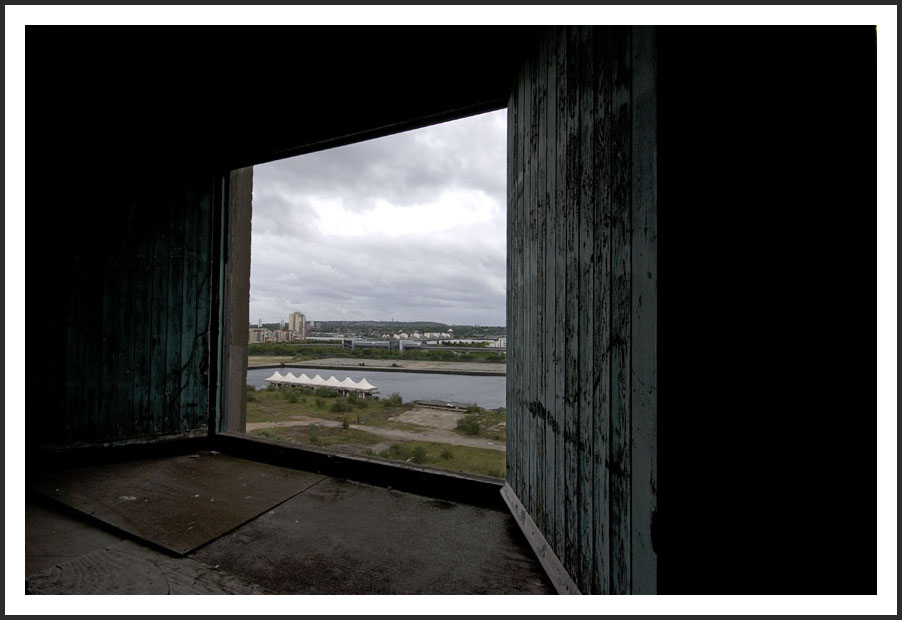
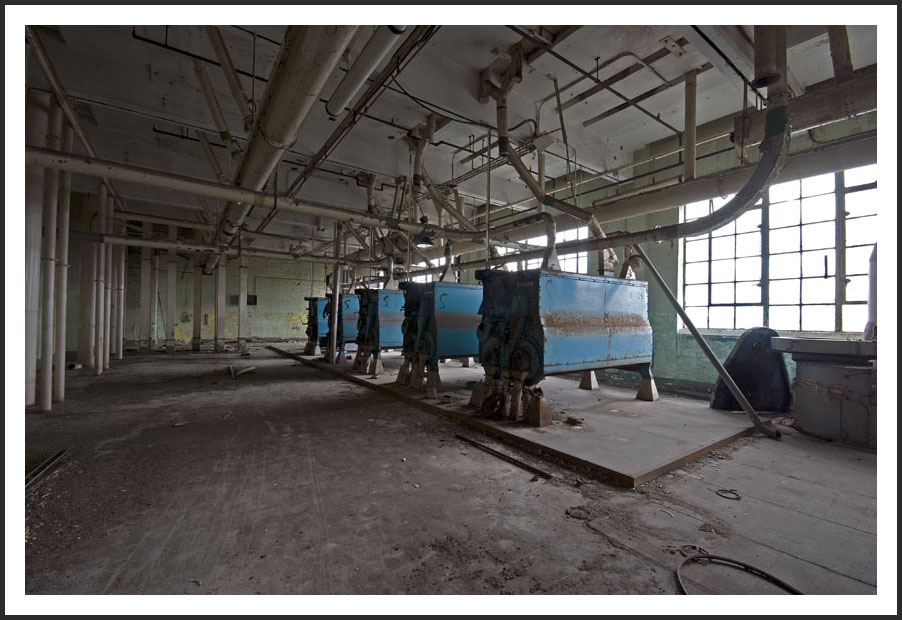
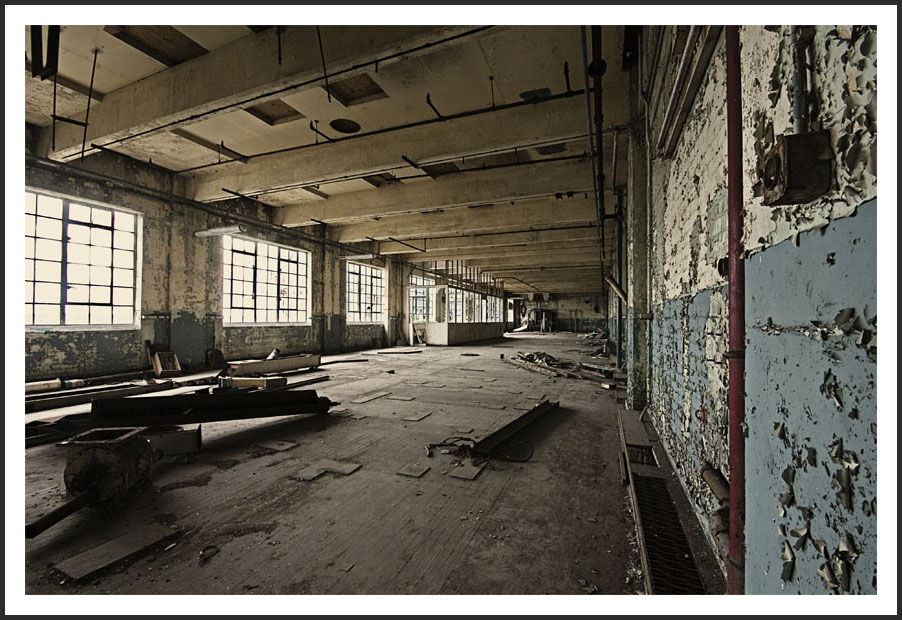
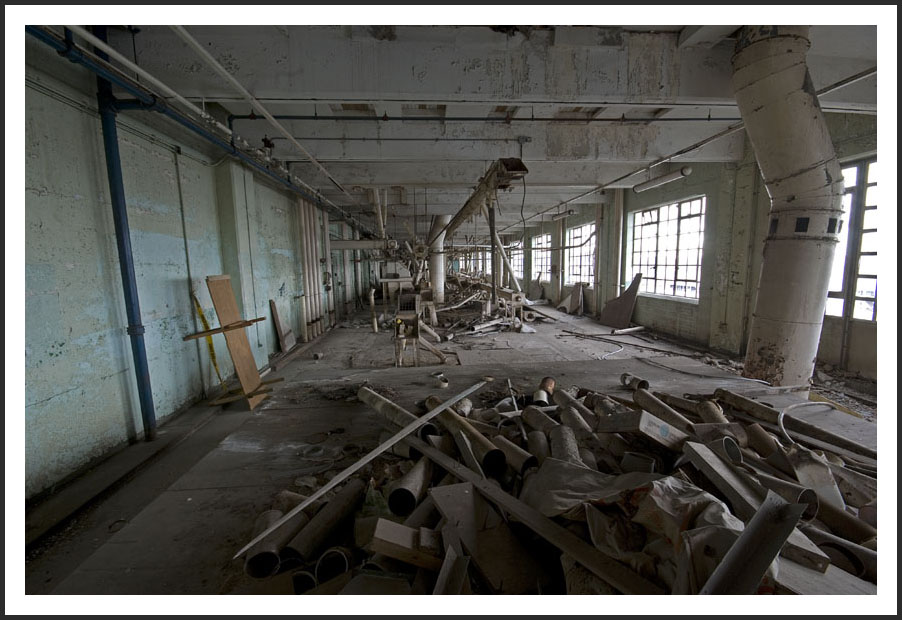
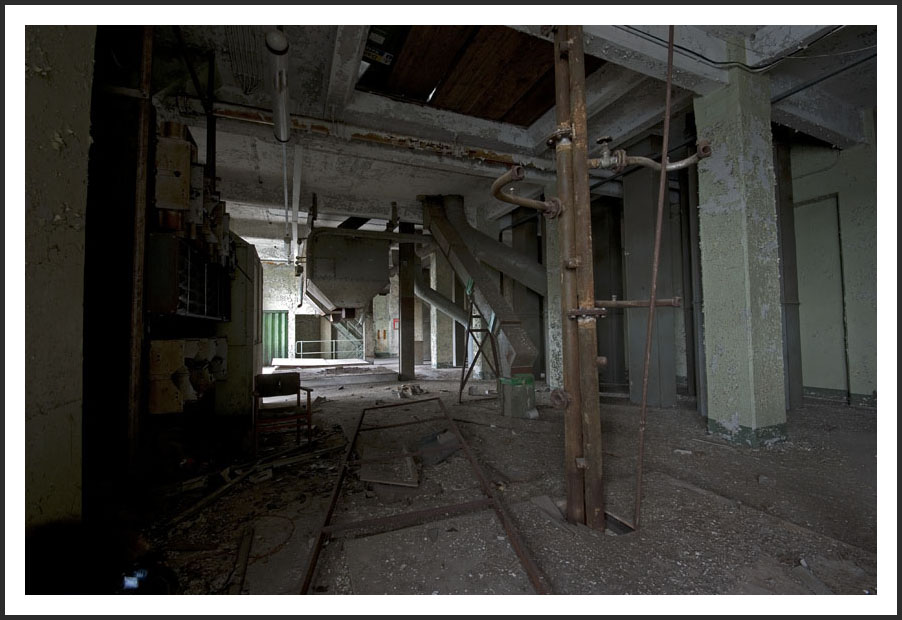
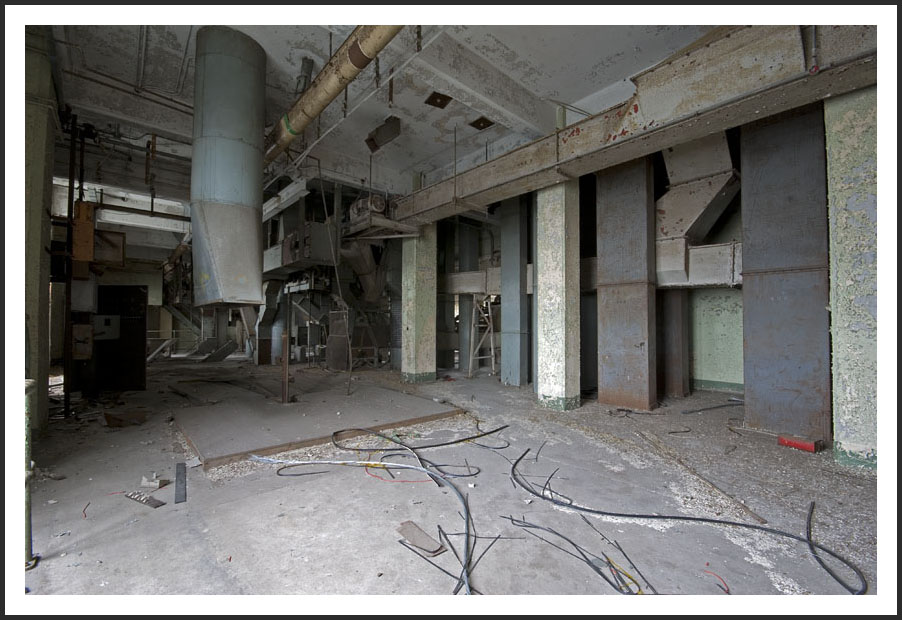
One of the strangest parts of the building is this particular room that just doesn't have a wall at one end it. The drop is about ten stories. Quite why it's missing I just don't know. I can only imagine it was done to salvage whatever was once in here. To the left are what look like a couple of mortuary slabs, maybe they would be used to lay my body on in the event that I don't make it out alive. This part of the mill was added at a later date, some time in the 1930's.
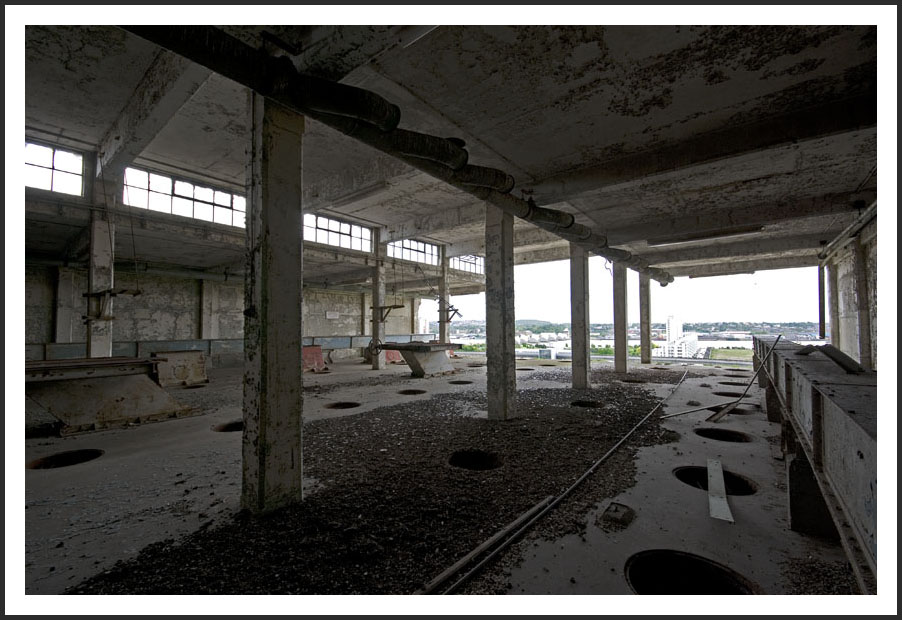
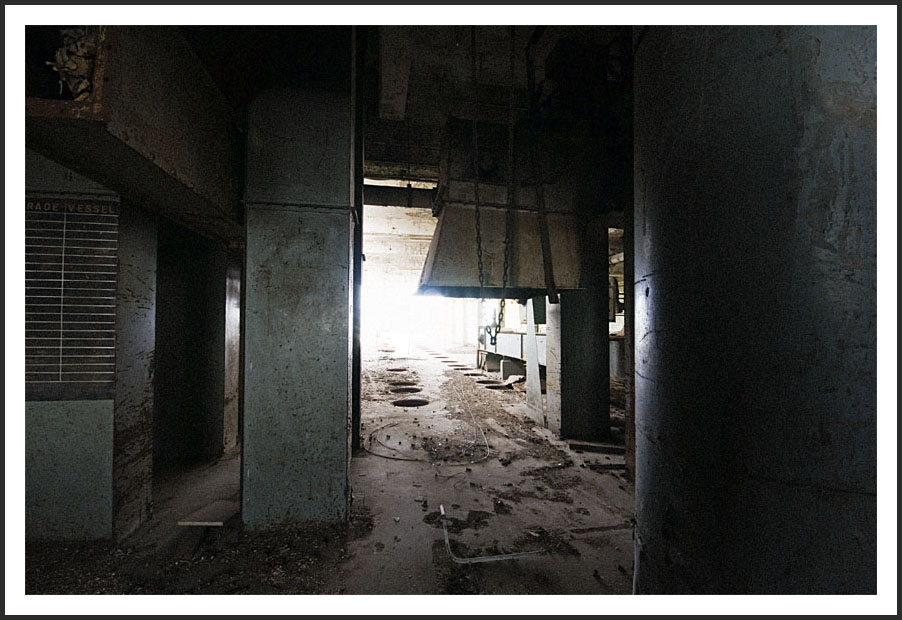
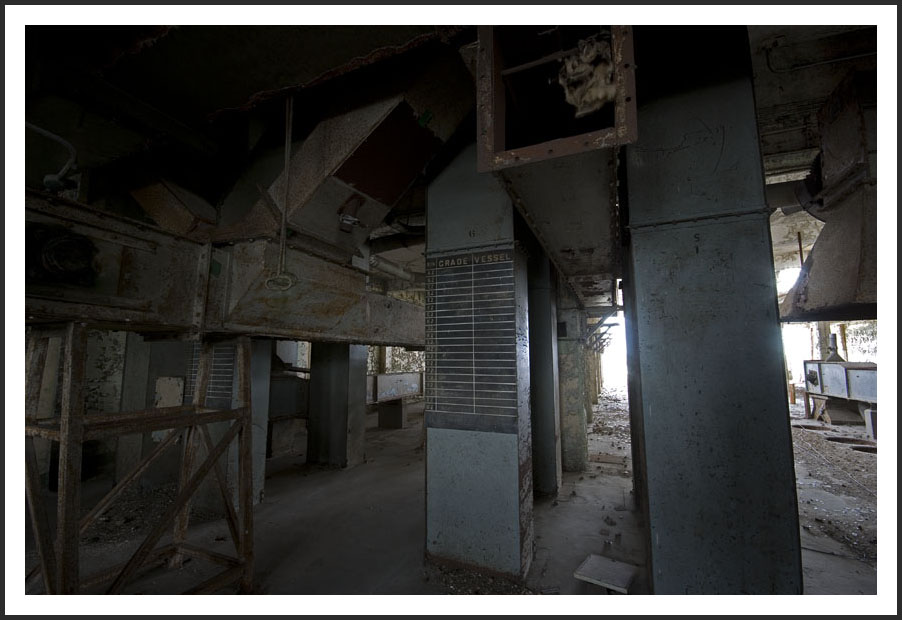
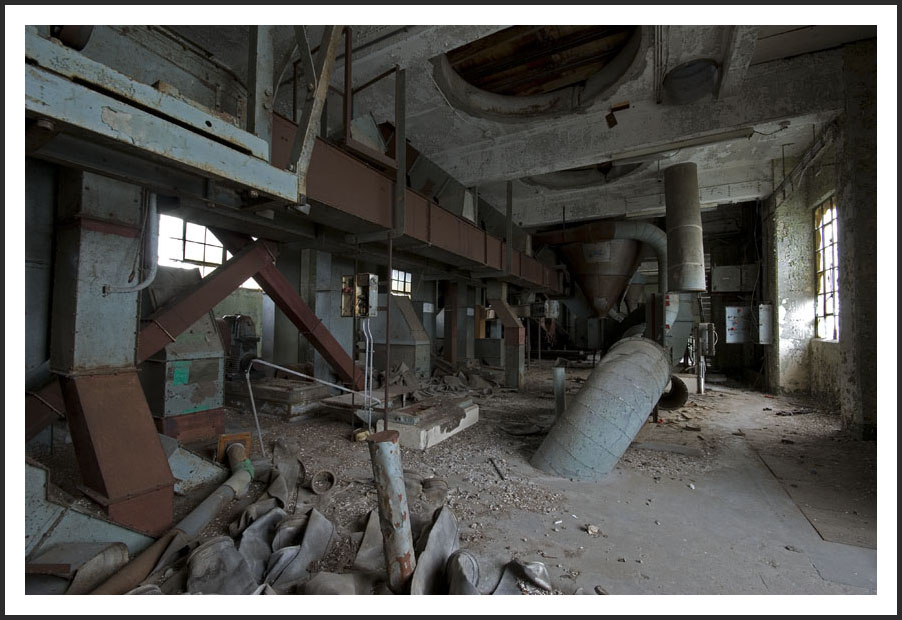
Nearing the top of the building what ever happened to the raw grain started just about here.
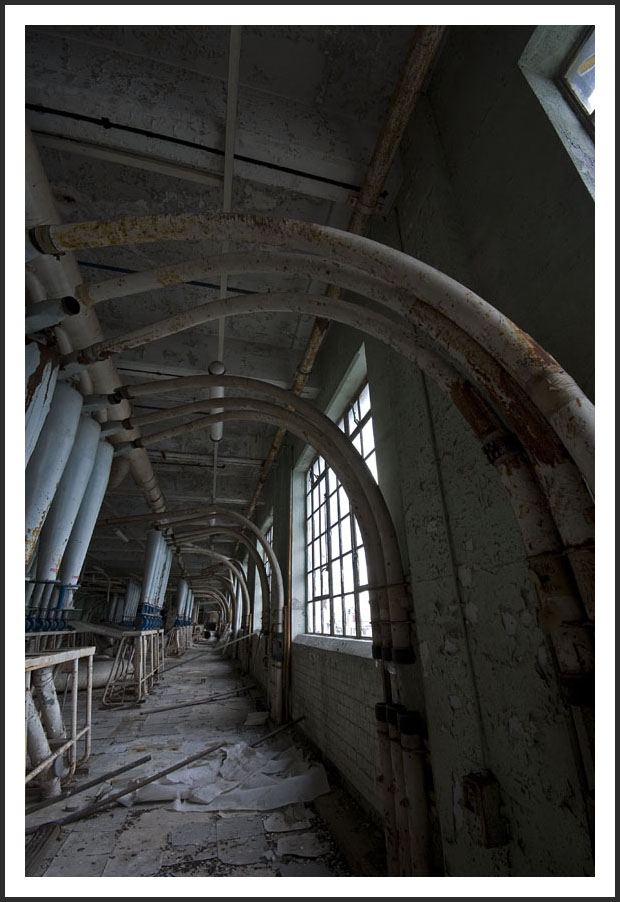
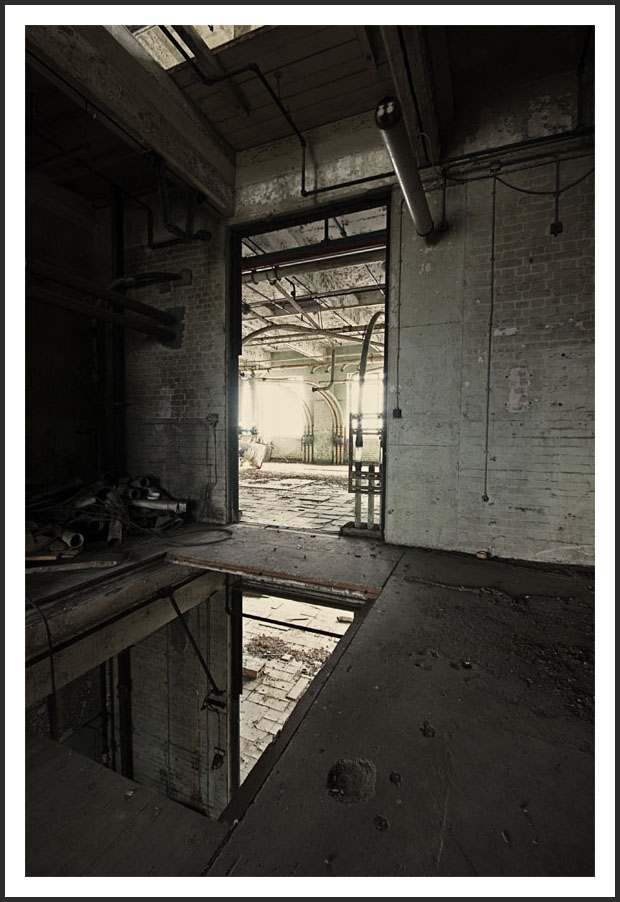
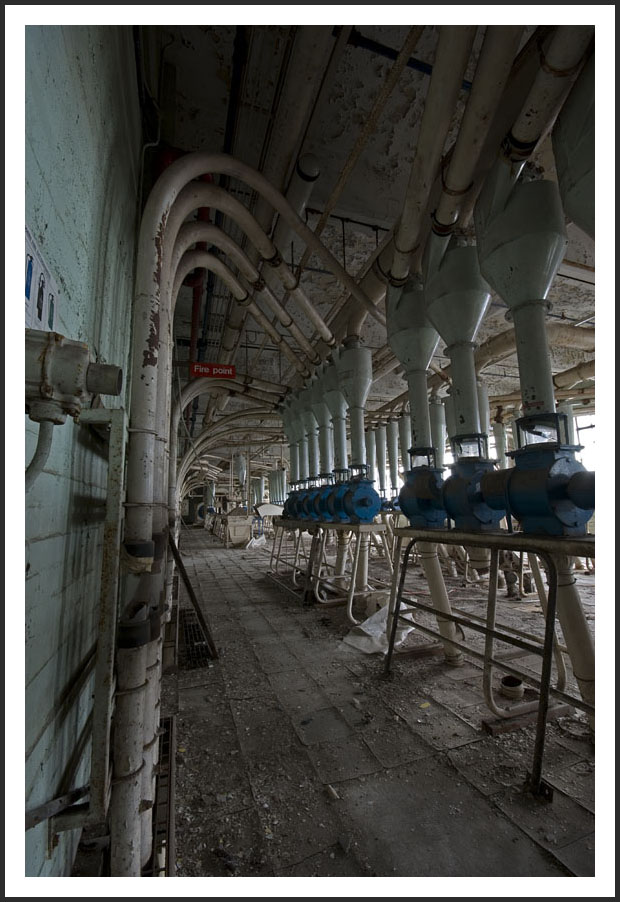
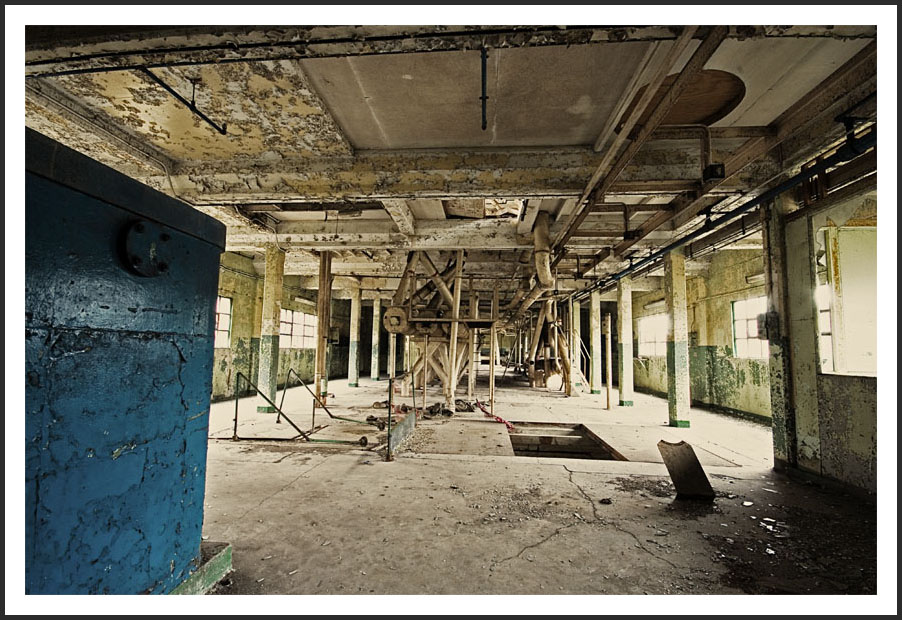
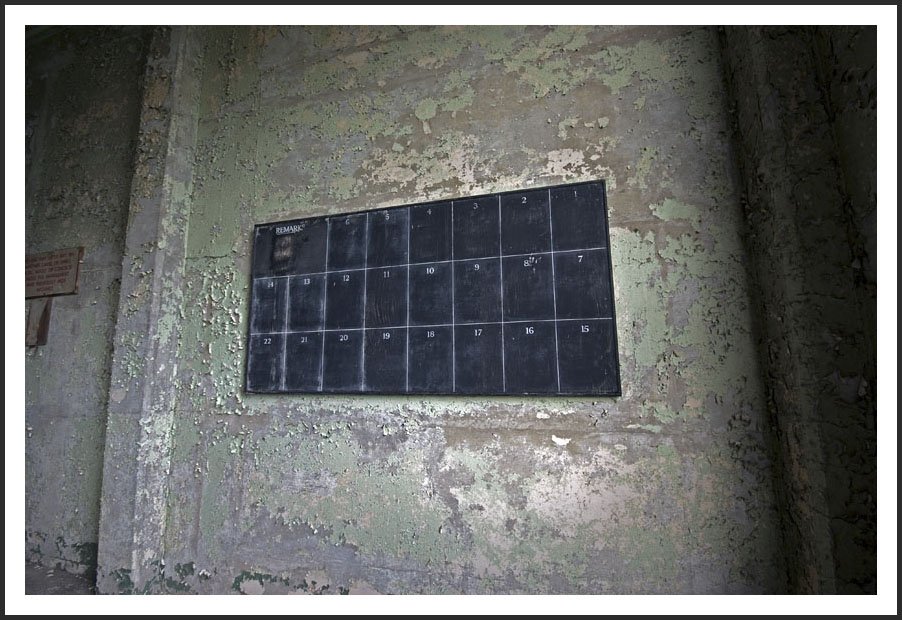
Plenty of old control panels are left in place. These ones once controlled the conditioning and blending processes. The wheat would be conditioned to a suitable moisture content by tempering it with water and leaving it in conditioning bins for up to 24 hours. This conditioning softens the outer pericarp (bran) layer of the wheat and enhances the release of the inner white endosperm at the time of milling. Wheat that has been properly cleaned and conditioned can then be blended with other wheat's in a process known as 'gristing'. This involves combining different wheat's to produce a mix capable of yielding the required quality of flour at the lowest possible cost.
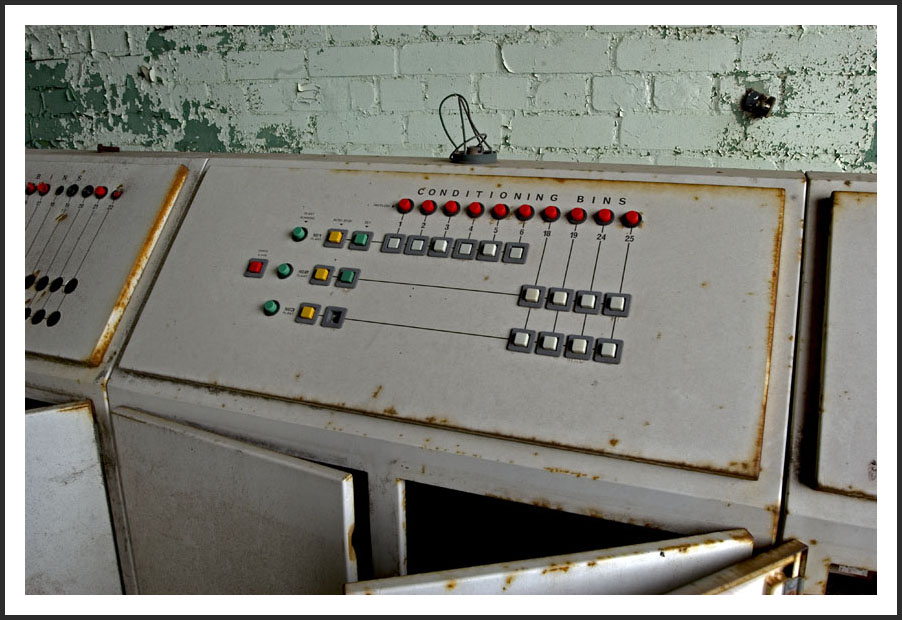
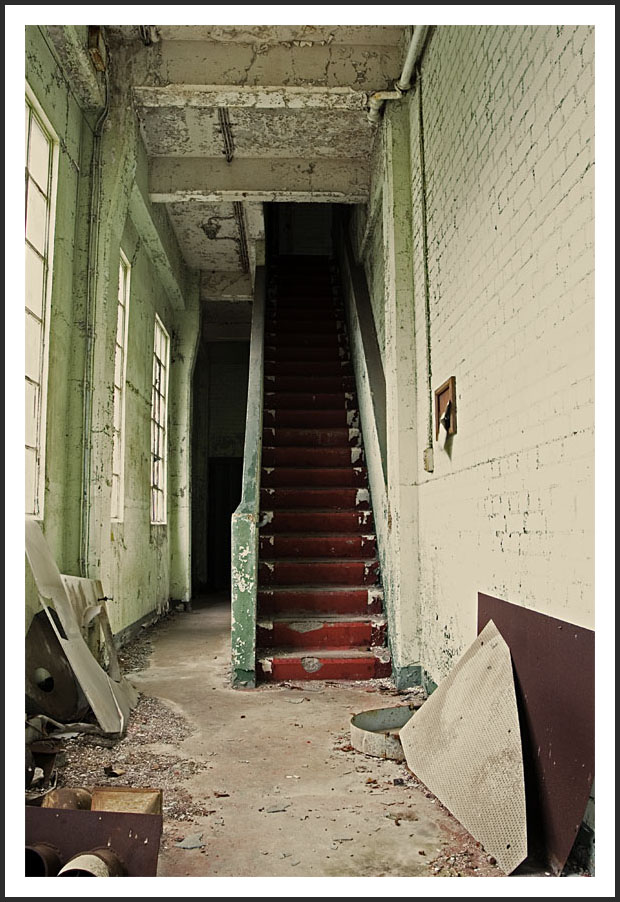
One of the last parts of the building to be added during the 1950's. This lies high level between the two wings of the building and is covered by what looks like sheet metal. By now Vernon and Sons had been bought out by Spillers.
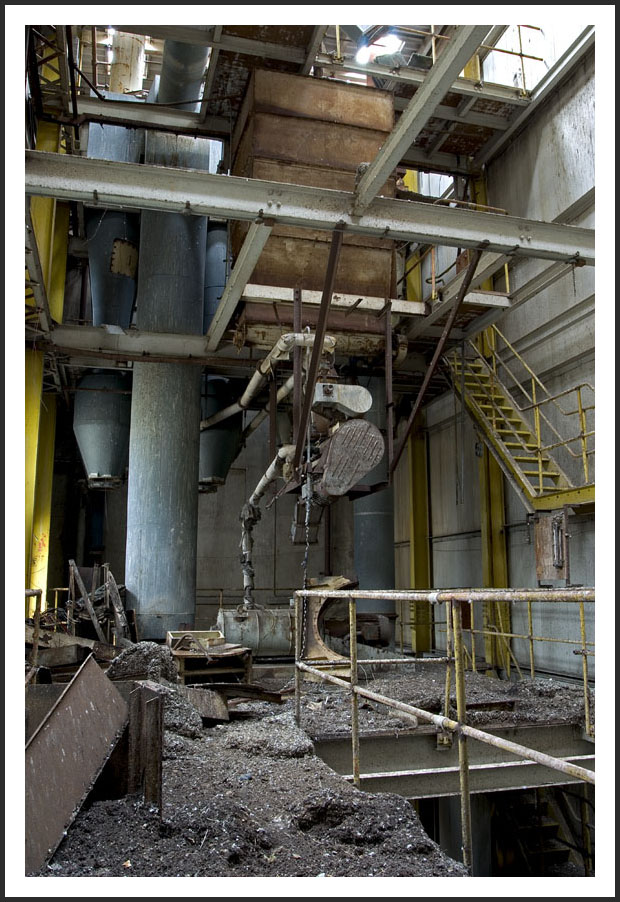
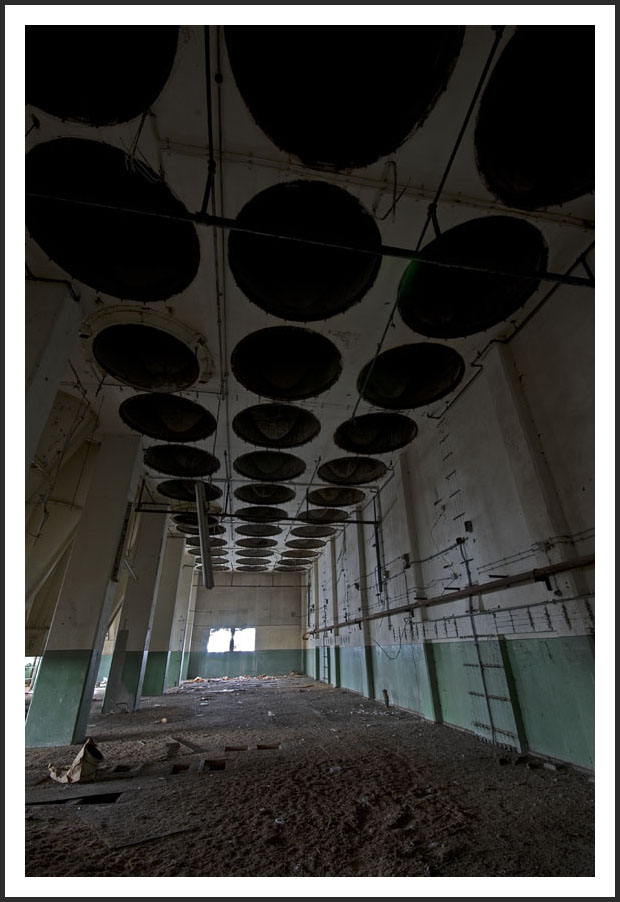
Hang your coat here.
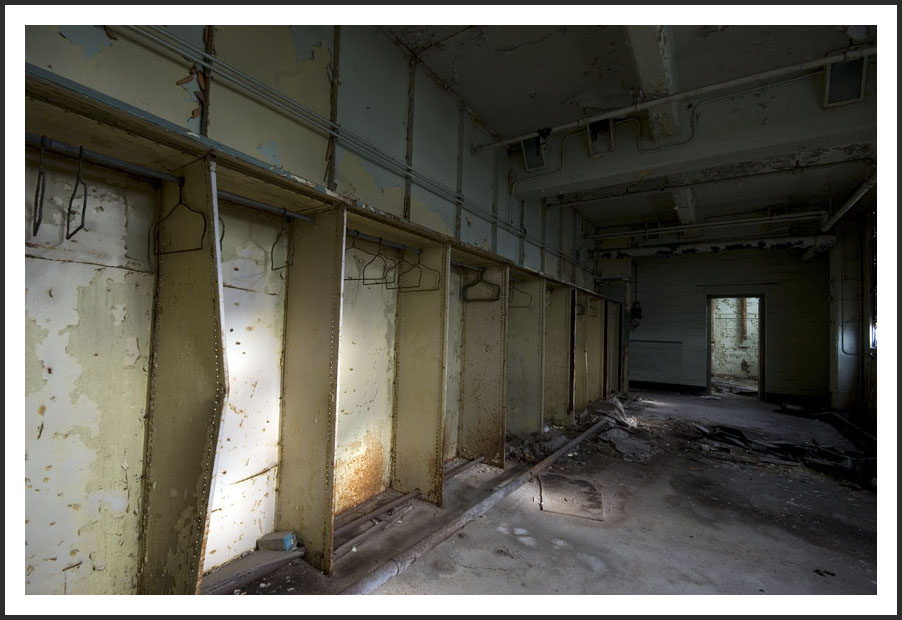
Fantastic light, very post-apocalyptic.
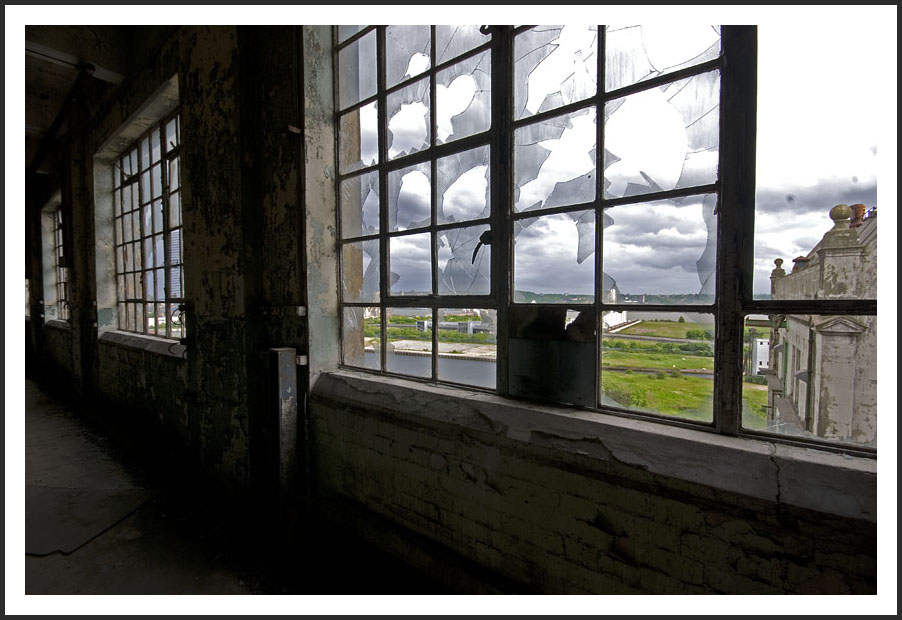
A really nice piece of 1950's engineering, this huge motor...
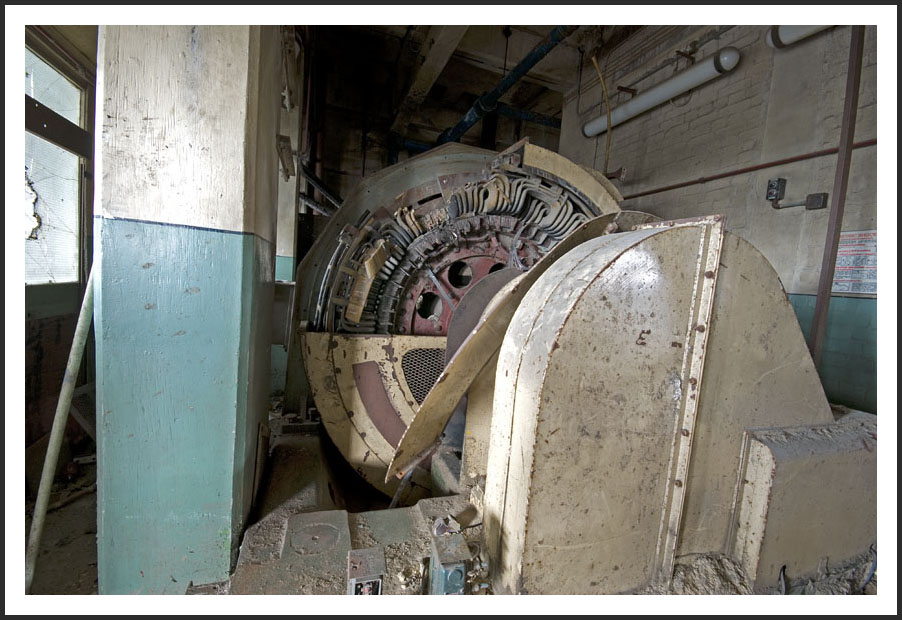
...used to drive the pulley system around the factory.
